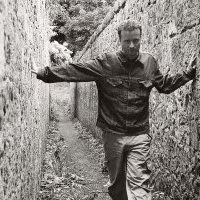Pigeon 101
A pigeon nest usually is constructed on covered building ledges that resemble cliffs, a Rock Pigeon's natural habitat. They also nest and roost on the support structures under bridges in cities and along highways.
Pigeons build their nests with small twigs. A cock brings the nesting material to his mate, one piece at a time, and she builds the nest. Nests are usually well-hidden and hard to find.
Pigeons mate for life and rear their broods together, although if one dies the other will take a new mate. Once the simple nest is built, the female lays an egg and then another a day or so later. The incubation period for common pigeons is 17 to 19 days.
The female sits on the egg from late afternoon through the night until about 10AM. The male then takes over and does the day shift. Once the eggs hatch, both parents feed the young squabs. The first food is pigeon milk or crop milk, a cheesy substance that appears in the crops of the parents at hatching time and is fed for a week or so. These birdlets get something called "pigeon milk."
Both parents manufacture in their crop, or throat, a rich, fatty "milk" that looks much like yellow cottage cheese. They ralph this delicacy up and expel it into the throats of their darlings. After eight or 10 days of this ambrosial diet, the parents begin mixing in solid food and water.
Then the adults start regurgitating partially digested grains for the young. By the time the squabs are ready to fly, about 4 weeks, the father is doing most of the feeding. The squabs are fed for another week to 10 days after they are free-flying.
Pigeons build their nests with small twigs. A cock brings the nesting material to his mate, one piece at a time, and she builds the nest. Nests are usually well-hidden and hard to find.
Pigeons mate for life and rear their broods together, although if one dies the other will take a new mate. Once the simple nest is built, the female lays an egg and then another a day or so later. The incubation period for common pigeons is 17 to 19 days.
The female sits on the egg from late afternoon through the night until about 10AM. The male then takes over and does the day shift. Once the eggs hatch, both parents feed the young squabs. The first food is pigeon milk or crop milk, a cheesy substance that appears in the crops of the parents at hatching time and is fed for a week or so. These birdlets get something called "pigeon milk."
Both parents manufacture in their crop, or throat, a rich, fatty "milk" that looks much like yellow cottage cheese. They ralph this delicacy up and expel it into the throats of their darlings. After eight or 10 days of this ambrosial diet, the parents begin mixing in solid food and water.
Then the adults start regurgitating partially digested grains for the young. By the time the squabs are ready to fly, about 4 weeks, the father is doing most of the feeding. The squabs are fed for another week to 10 days after they are free-flying.


0 Comments:
Post a Comment
<< Home